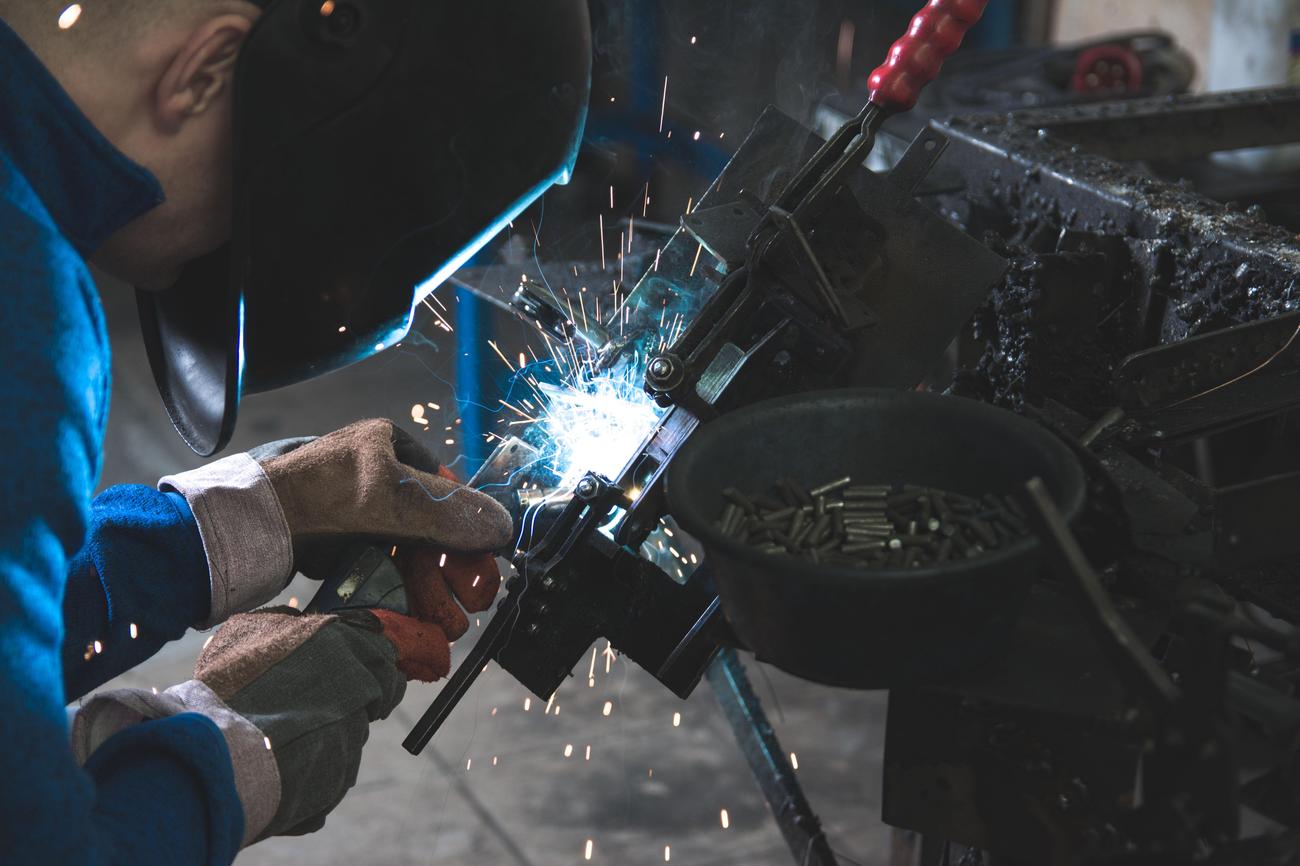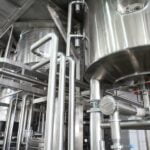In an era where technological advancements are revolutionizing industries across the board, the steel industry stands tall as a shining example. It is no secret that steel, with its unmatched strength and versatility, has been the backbone of construction and manufacturing for centuries. However, what truly sets this article apart is its focus on the latest technological advancements in steel, which have propelled this age-old material into a new era of innovation and endless possibilities. Join us as we delve into the world of steel and explore the cutting-edge breakthroughs that are shaping the future of construction and manufacturing.

Technological Advancements in Steel: Revolutionizing Construction and Manufacturing
The steel industry has undergone remarkable advancements in recent years, driven by a constant quest for innovation and technological breakthroughs. These advancements have reshaped the way we construct buildings, manufacture products, and even protect our environment. In this article, we will explore some of the most significant technological advancements in steel that are revolutionizing the construction and manufacturing sectors.
ORC Technology: Harnessing Heat Energy for Efficiency
One of the game-changing advancements in the steel industry is the ORC (Organic Rankine Cycle) technology, a thermodynamic process that converts heat energy into work. By utilizing waste heat generated during steel production, this technology helps maximize energy efficiency and reduce greenhouse gas emissions. The ORC system captures the excess heat, which would otherwise be wasted, and converts it into electricity. This way, steel mills can not only meet their energy needs but also contribute to the overall energy grid, promoting sustainability in the industry.
The ORC technology harnesses the untapped potential of wasted heat, transforming it into a valuable energy resource for steel mills.
Hybrit Process: Pioneering Carbon-Neutral Ironmaking
Another remarkable advancement in the steel industry is the Hybrit Process. Developed by Swedish organizations SSAB, LKAB, and Vattenfall, this breakthrough ironmaking technology aims to reduce CO2 emissions by transitioning from traditional coal-based processes to hydrogen-based iron production. By replacing coking coal with hydrogen, the Hybrit Process eliminates carbon emissions from the ironmaking process, contributing to a significant reduction in the industry’s carbon footprint.
The Hybrit Process presents a promising pathway towards carbon-neutral steel production, revolutionizing the industry’s environmental impact.
Jet Process: Transforming Steel Production
In the quest for high-quality, clean steel, the Jet Process has emerged as a cutting-edge method. By utilizing an electric arc furnace and supersonic jets of oxygen, this process enables the production of steel with exceptional purity and enhanced properties. The supersonic oxygen jets effectively remove impurities, resulting in steel that meets the strictest quality standards. The Jet Process not only enhances the performance and durability of steel but also reduces the need for extensive post-processing treatments.
The Jet Process propels the steel industry into new possibilities, delivering exceptional quality steel with greater efficiency and lower costs.
Molten Oxide Electrolysis: Direct Reduction of Iron Oxide
With a strong focus on sustainability and resource optimization, the steel industry has explored Molten Oxide Electrolysis (MOE) as an alternative method for reducing iron oxide. This process utilizes an electrolytic cell to directly reduce iron oxide, eliminating the need for traditional blast furnaces or direct reduction plants. By simplifying the ironmaking process and reducing energy consumption, MOE offers a more environmentally friendly and cost-effective approach to steel production, opening up new avenues for technological innovation in the industry.
Molten Oxide Electrolysis disrupts traditional ironmaking methods, paving the way for cleaner, more efficient steel production.
Boosting Efficiency and Sustainability
Apart from these specific technological breakthroughs, advancements in steel manufacturing and processing have played a pivotal role in revolutionizing the industry. These advancements encompass various areas such as converter steelmaking, EAF steelmaking, ladle refining, and non-metallic inclusion management. Through continuous research and development, manufacturers have enhanced their processes, resulting in improved efficiency, product quality, and reduced environmental impact.
Technological advancements in steel manufacturing and processing continue to refine and optimize the industry, promoting efficiency and sustainability.
The Future of Steel Lies in Advancements and Sustainability
As we look ahead, it is evident that the future of the steel industry rests upon continued technological advancements and the implementation of sustainable practices. With the rising demand for steel and the ever-increasing need for minimizing environmental impact, the industry is at a crucial juncture. By embracing innovation, investing in research and development, and adopting sustainable practices, the steel industry can forge a path towards a greener and more prosperous future.
The steel industry’s promising future lies in the fusion of technological advancements and sustainable practices, propelling it towards unprecedented success.
The table below provides a brief overview of the highlighted technological advancements in the steel industry:
| Technological Advancement | Key Features |
|---|---|
| ORC Technology | Converts waste heat into electricity for energy |
| Hybrit Process | Utilizes hydrogen for carbon-neutral ironmaking |
| Jet Process | Produces high-quality steel with supersonic jets |
| Molten Oxide Electrolysis | Direct reduction of iron oxide in an electrolytic cell |
The steel industry continues to evolve, driven by constant innovation and technological advancements. Through these advancements, we witness not only improved efficiency and product quality but also a profound impact on the environment. With sustainability at the forefront, the steel industry is poised to shape a future where construction and manufacturing are built on the pillars of technological prowess and environmental responsibility.
Steel Facts History
Steel has a rich and fascinating history that stretches back centuries. From its humble beginnings as an alloy during the Iron Age to its modern-day prominence in countless industries, steel has been a vital part of human civilization. Its durability, strength, and versatility have made it a key component in the construction of buildings, bridges, and even intricate machinery. If you’re curious to learn more about the intriguing facts and captivating history of steel, click here to explore our comprehensive guide. Discover how this remarkable material has shaped our world and continues to play a pivotal role in shaping our future.
FAQ
Question 1
What is the ORC Technology and how is it utilized in the steel industry?
Answer 1
The ORC Technology is a thermodynamic process that converts heat energy into work in the steel industry. It is used to generate electricity from waste heat produced during steel production, improving energy efficiency.
Question 2
What is the Hybrit Process and how does it contribute to reducing CO2 emissions in the steel industry?
Answer 2
The Hybrit Process, developed by Swedish organizations SSAB, LKAB, and Vattenfall, aims to use hydrogen breakthrough ironmaking technology to reduce CO2 emissions. By replacing the traditional use of coal in the steelmaking process with hydrogen, this technology allows for the production of steel with significantly lower carbon emissions.
Question 3
How does the Jet Process contribute to producing high-quality steel in the steel industry?
Answer 3
The Jet Process is a method used in the steel industry to produce high-quality, clean steel by using an electric arc furnace and supersonic jets of oxygen. This process helps remove impurities and refine the steel, resulting in improved structural properties and enhanced product quality.
Question 4
What is Molten Oxide Electrolysis and how does it aim to reduce iron oxide in the steel industry?
Answer 4
Molten Oxide Electrolysis is a technology that aims to directly reduce iron oxide in the steel industry by using an electrolytic cell. This process helps reduce the reliance on traditional ironmaking methods and offers the potential for a more sustainable and efficient approach to steel production.
Question 5
How do technological advancements in the steel industry contribute to reducing energy consumption and CO2 emissions?
Answer 5
Technological advancements in the steel industry have led to significant reductions in energy consumption and CO2 emissions. Through the development of more efficient processes, such as converter steelmaking, EAF steelmaking, ladle refining, and non-metallic inclusion management, innovative techniques and improved resource management have allowed for a more sustainable steel production while minimizing environmental impact.
- Georgia Platform: A Southern Strategy, 1850s - March 31, 2025
- How many weeks is 40 days: Quick Conversion Guide for Accurate Results - March 31, 2025
- How many feet is 300 meters? 984 Feet: Understand Length Conversions Easily - March 31, 2025
















